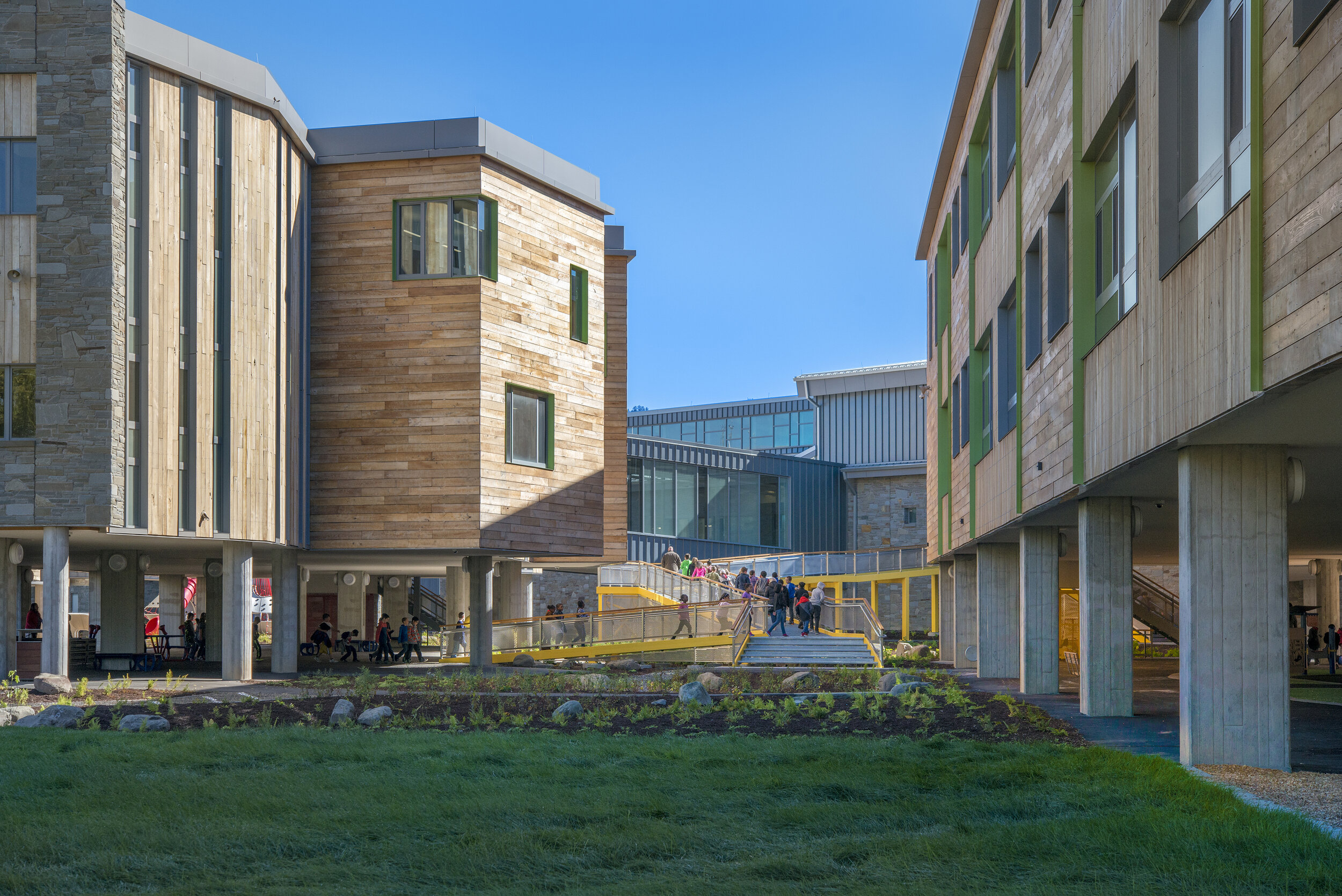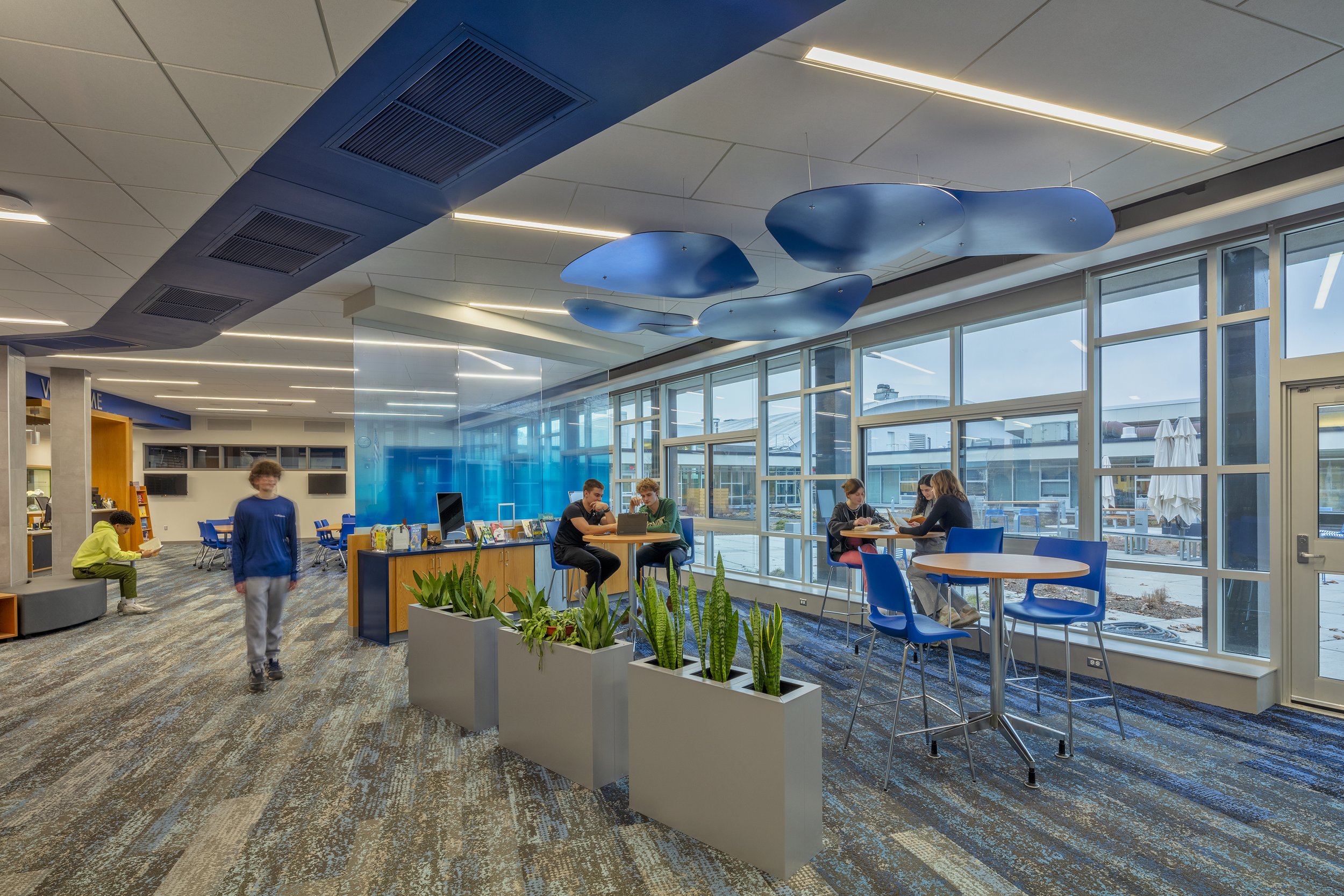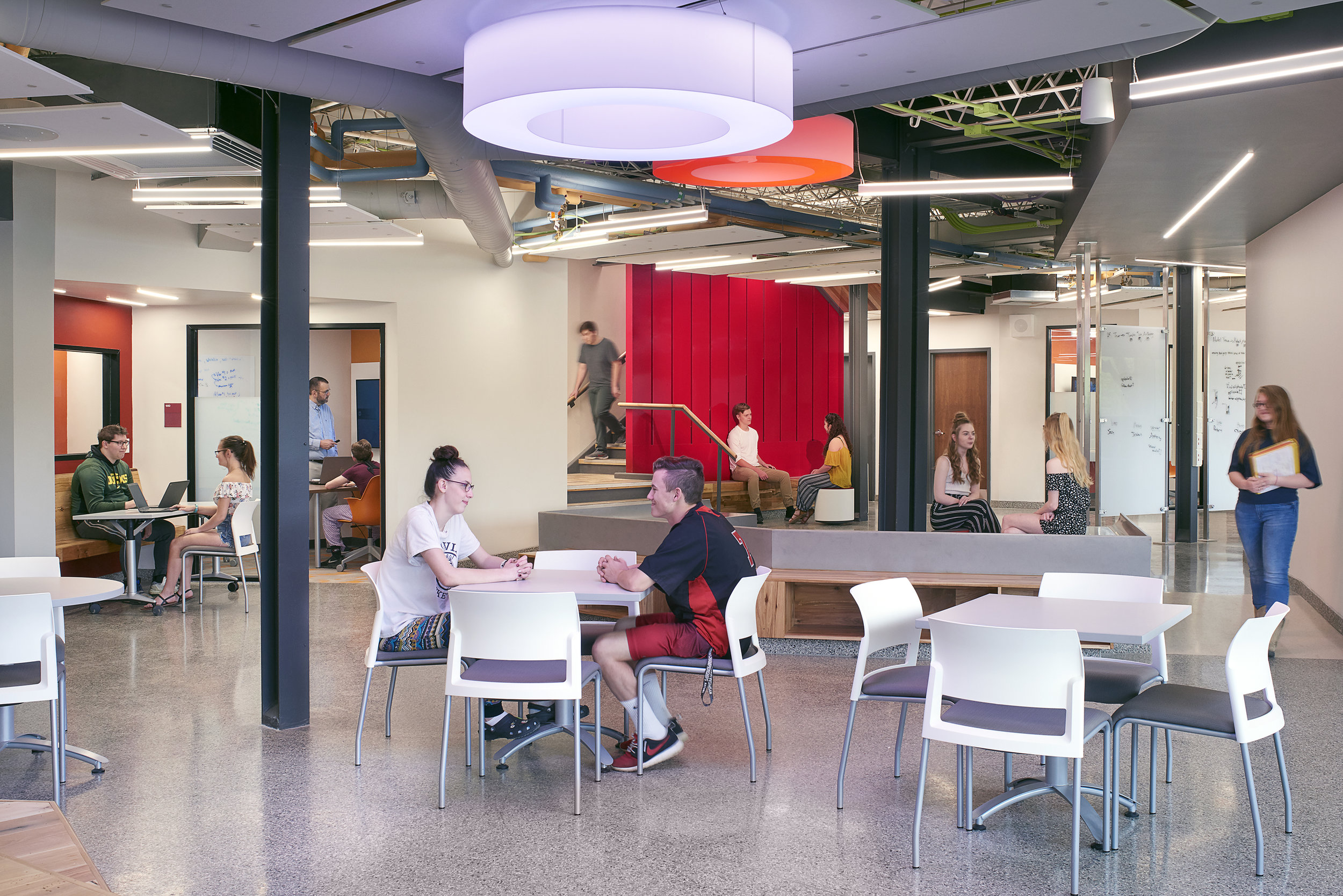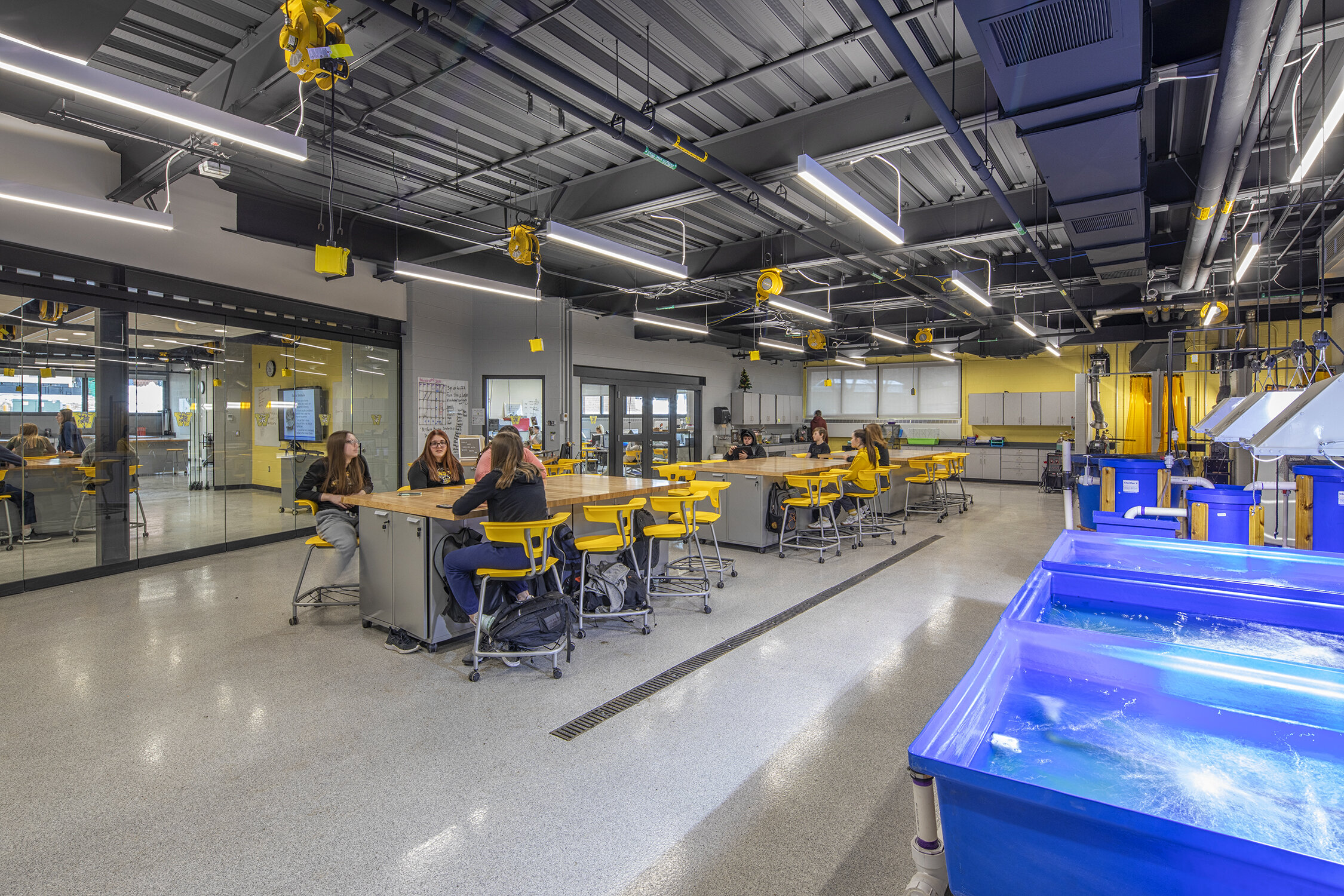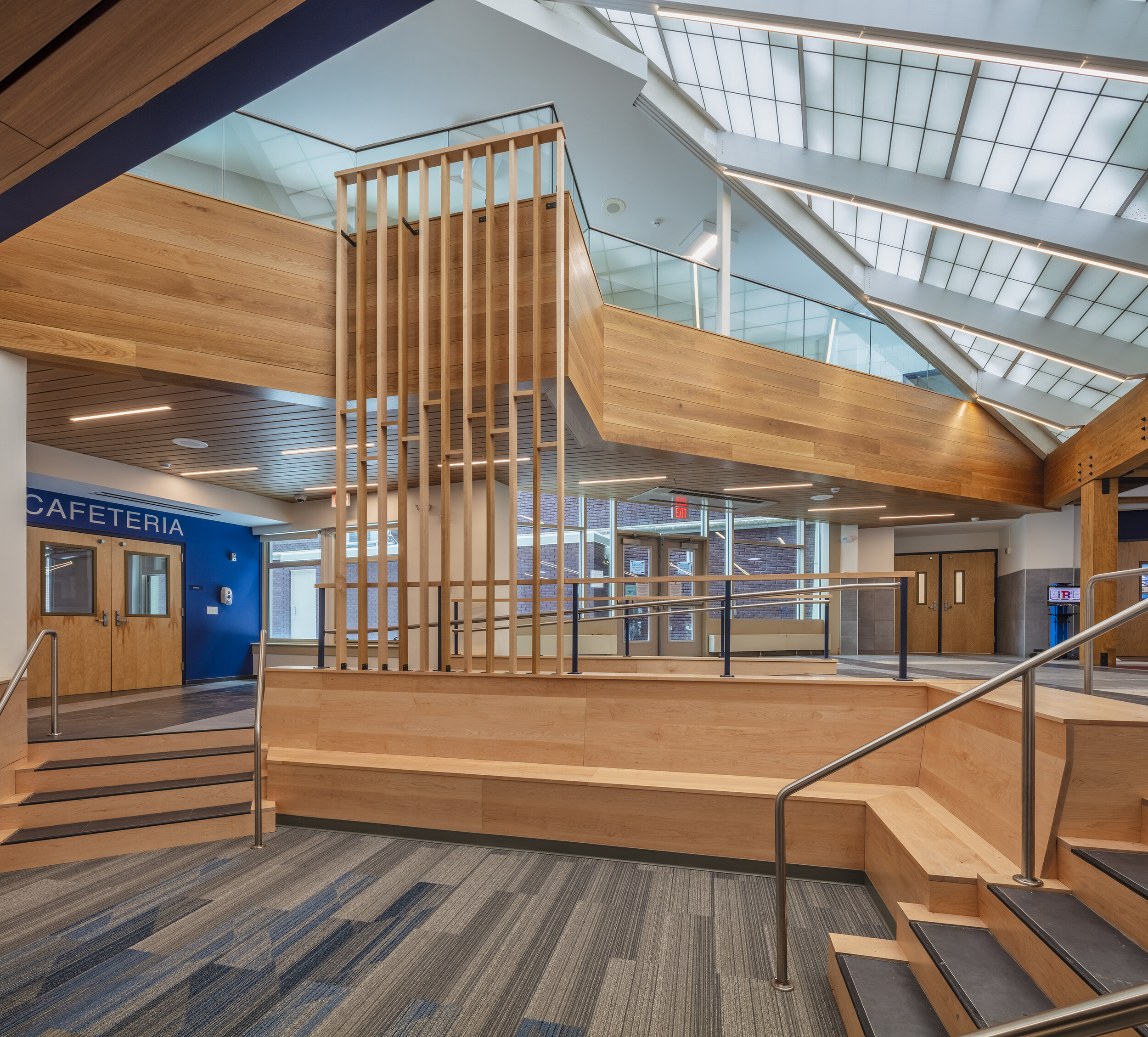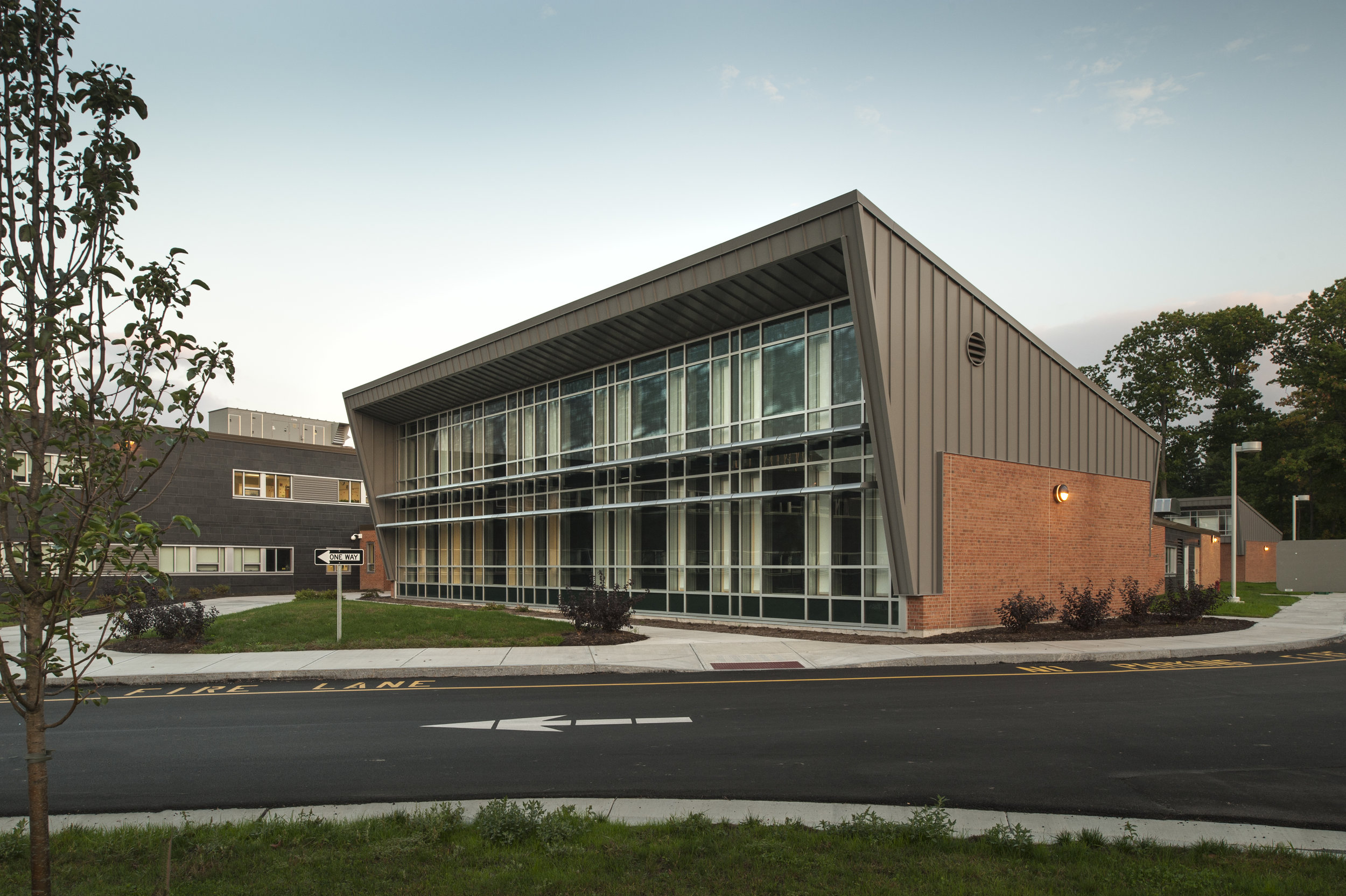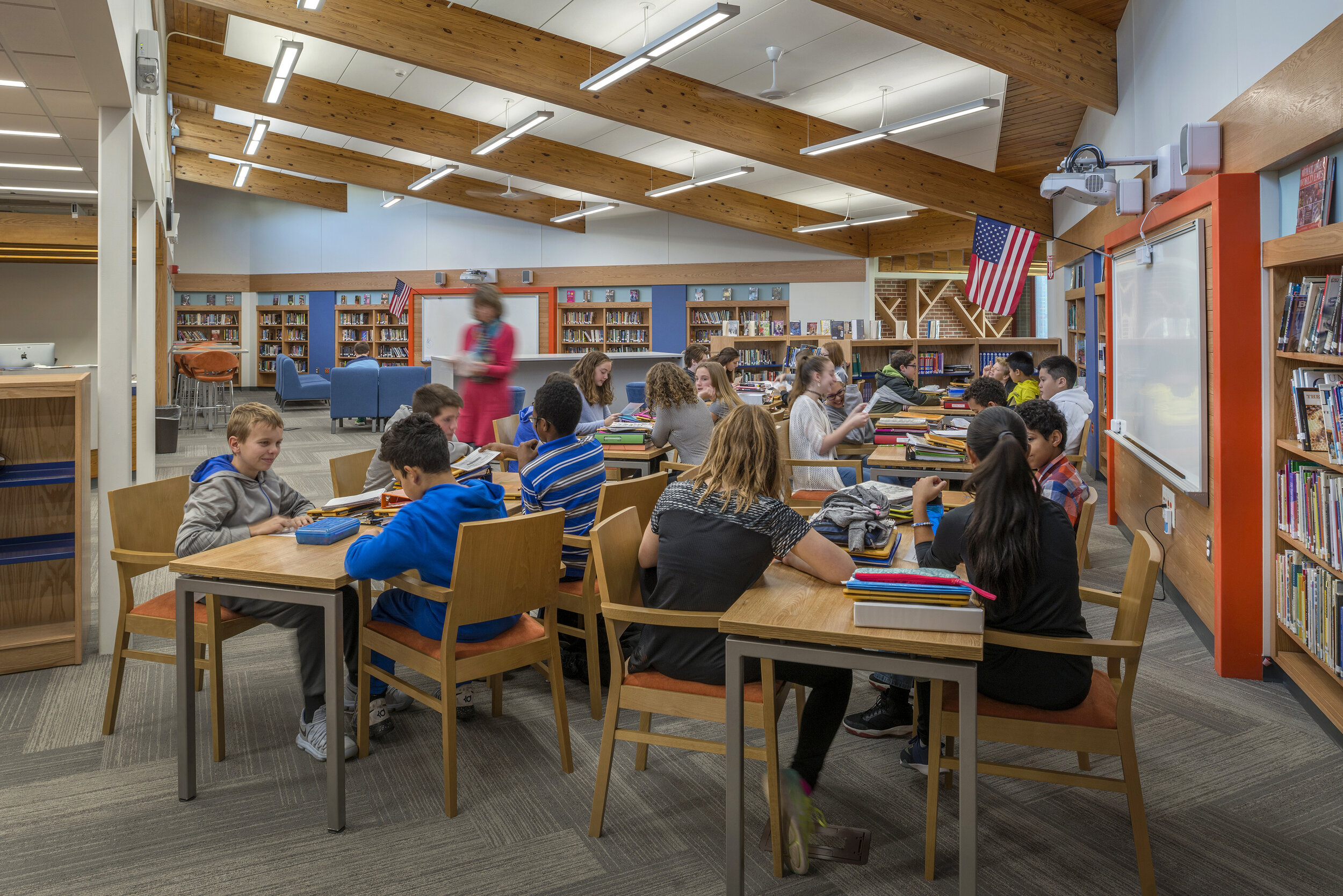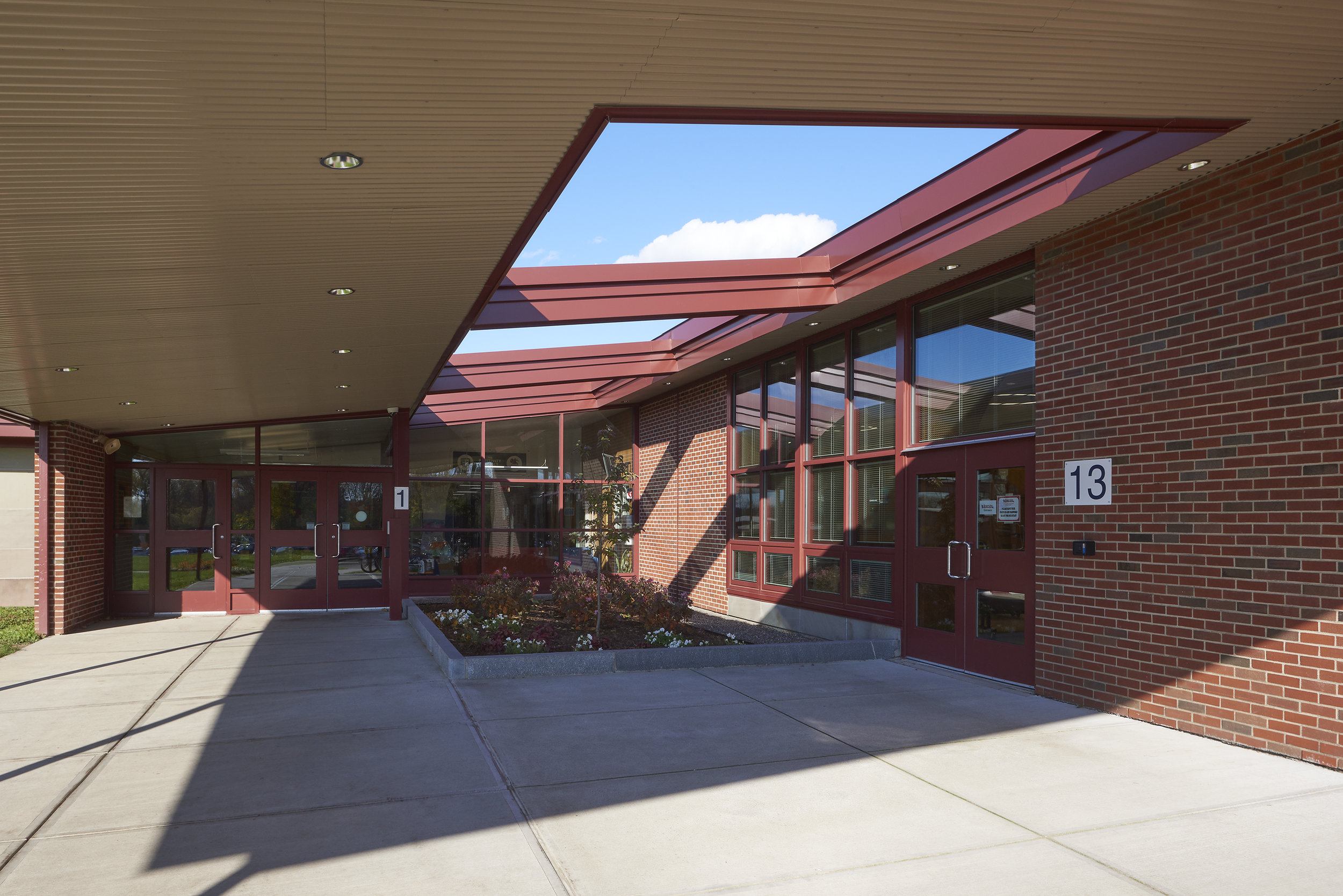STEAM LEARNING CENTER.
Groton Central School District
The $4.8 million center is a renovated 8,000-square-foot Science, Technology, Engineering, Arts, and Math (STEAM) lab and shared-learning space. Ashley McGraw merged the district’s curriculum with the overarching concept using form, light, and materials to create a modern learning environment where both teachers and students will feel valued, focused, and inquisitive.
As opposed to a traditional classroom where students are taught in a rigid box-like setting, this STEAM center was designed as a dynamic interactive place that engages students and teachers in learning.
The center was created, in collaboration with Groton Central School District Superintendent Margo Martin, to be a place where students want to hang out. The former dreary basement at Groton Junior-Senior High School is now a colorful, sun-lit, biophilia-influenced lounge fitted with high-tech, enhanced screens, work stations, adaptable furniture, and state-of-the-art energy-efficient lighting and HVAC systems.
Nearly every surface is a writing surface, including the glass walls that surround enclose the space, to encourage spontaneous creativity and ideation.
The center’s floor plan features transparent and flexible spaces of varying sizes. This mirrors the design of contemporary higher-education and corporate office environments which encourage independent work as well as spontaneous collaboration, skills that students need to develop to be successful in the 21st-century.
“We believe young people will come here and discover their passion, develop their foundational skills, and utilize the center’s resources so they can be successful entering college or the workforce,” explained Catherine Wolfe, Principal/Senior Interior Designer.
Identifying Student Needs
According to 2017-2018 New York State Education Department school report card data, less than 30 percent of Groton students in 7th and 8th grade were proficient in English, Math, or Science. School district officials shared their goals to change that with Ashley McGraw, and our firm responded with a design scheme for the STEAM center that supports project-based learning.
The multi-purpose space—complete with a photo, video, and music editing studio—will be used for a variety of educational programs that are industry-aligned, including: Building Trades, Computer Science, Engineering & Electronics, Agriculture Technology, and Communications & Media Arts.
Martin has gathered data, including Google surveys and social and emotional learning (SEL) evaluations, which measured how students feel about themselves as learners. And teachers who are part of the STEAM program have reported seeing “completely different students,” as compared to the same students in the general education courses.
During the design process, Martin was instrumental in leading the ideas around different thinking of educational delivery and what she wanted for her students with the design team. At the time, her students were polling at approximately 19% satisfaction in their educational delivery. That was a huge call to action that something needed to change for us. The outcomes of this have been amazing for the District. They are now in their second year in using this space and the satisfaction in education delivery from the students has gone up from 19% up to 71%.
benefits beyond the school
This STEAM lab is poised to become a regenerative project, and by that, we expect the center will work toward helping students develop new skills and also help restore the fabric of the surrounding community on environmental, social, and economic levels. Community organizations in the small town of 5,950 residents have rallied around the redesigned space as they recognize it has the possibility to become an economic engine.
An agricultural steering committee promoted the expansion of an agricultural program there, STEAM experts are offering their services as guest speakers and adult education courses are also being offered there during after school hours. Added Wolfe, “We like to think that the “A” in STEAM is not only for ‘arts’, but also for ‘accessibility.’ We hope this center continues to evolve into not just something exclusively for students but as a space for everybody, and that celebrates the learner as an individual.”
Photography: David Lamb Photography






